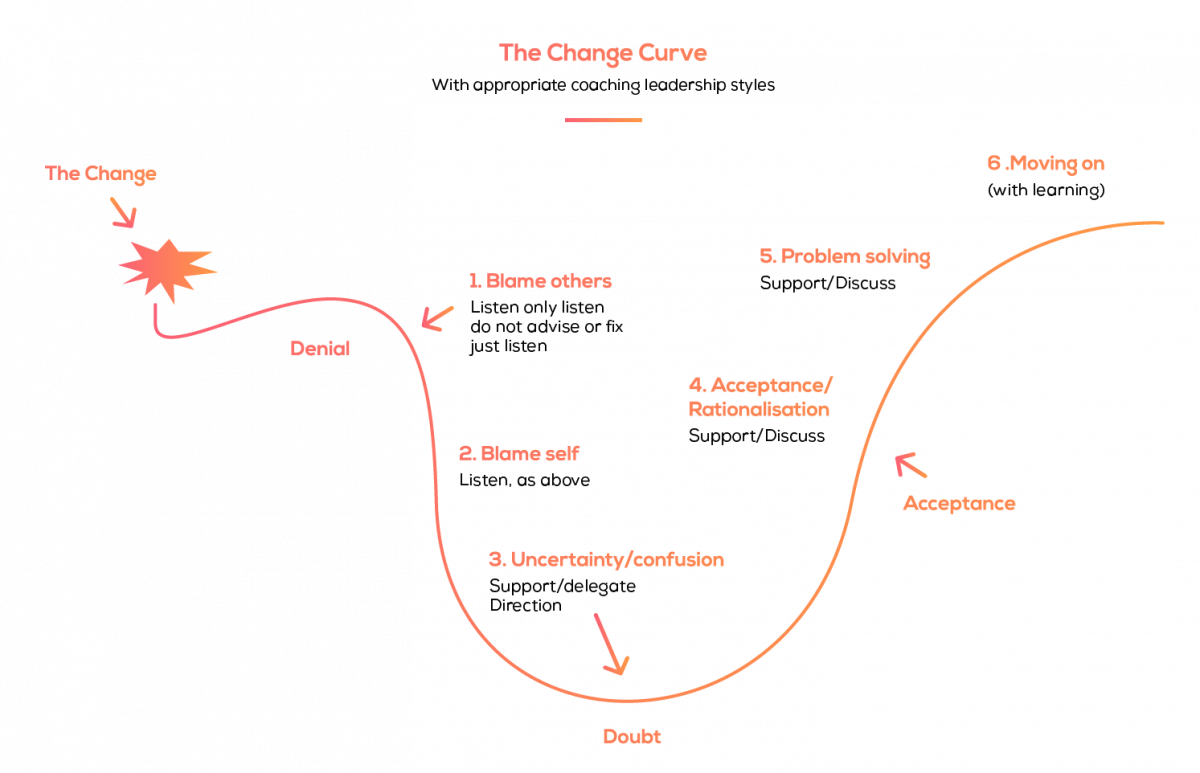7 communication tips in times of uncertainty.
19 January 2021
Communication for uncertainty requires to do things differently from the way you normally would.
Article written by Morten Kamp Andersen
19 January 2021
Communication for uncertainty requires to do things differently from the way you normally would.
Article written by Morten Kamp Andersen
It’s not over yet. Vaccines are rolling out, but many countries continue to battle with Covid-19. These are uncertain times. Uncertainty makes people feel vulnerable, confused, and looking for directions. And without clear guidance, resistance spreads like wildfire, which can lead to organisational paralysis. The cure? Effective communication. Your role as a manager and leader is to create a supportive and reassuring environment. How? Know that communication for uncertainty requires to do things differently from the way you normally would. Understand what uncertainty does to the people. And use these seven tips to align your communication efforts.
What do leaders tend to focus on in times of uncertainty? Processes, tasks, immediate action. They fall into the tunnel vision trap. They forge ahead, driven by a sense of urgency. And their staff can be left behind, immerse in a whirlwind of strong emotions.
Think grief, fear, frustration, and apathy. We all tend to hold onto the familiar. Stepping into the unknown takes us out of our comfort zone. First comes a feeling of loss and renouncement (grief). Closing the door to the past takes time. When we then turn towards the future – an uncertain future –, fear takes over. We look for reassurance and strategies for coping. If frustration is part of the changing process, it can accentuate to the point of apathy in the absence of proper guidance and support.
Help people push past the confusion phase. Not yet familiar with the change curve? Have a look at the figure below (source: Insights). It will help you understand human behaviour during change. After some initial confusion comes rationalisation, problem solving and getting on board with whatever was decided and implemented. Your role as a manager and leader is to help people push past the phase of uncertainty, accept the change, adjust, and move on. Or to put it simply, get them unstuck and mitigate resistances. But to do so, you must ramp up and structure your communication efforts. People expect different things as they move along the curve. Most of all, they expect you - their most trusted source in difficult times - to show up often and lead from the front.

#tip 1. Make communication truly go both ways. More than a tip, it’s a rule during difficult times. Communication is not all about the business message. Make it about the people. Foster dialogue. Encourage your collaborators to share their views and feelings. Pulse surveys, empathy mapping, informal one-on-one conversations…, the format doesn’t matter as long as it creates a safe and supportive environment.
#tip 2. Remember the TTT rule: trust and transparency in turmoil. Just “tell it like it is”. Don’t wait until you have it all worked out. It’s ok to recognise that there are grey zones. Keeping silent, minimising, denying and twisting reality are big no-noes. These (ill-advised) strategies only add fuel to the fire, intensifying rumours and creating more uncertainty down the line. Trust keeps people in for the long haul.
#tip 3. Be proactive, it’s a campaign. Waiting until you are faced with a barrage of questions is the best way to let panic kick in and chaos take over the organisation. You need to have a plan for distilling and adapting communications to people’s needs (see below). Plus, how would you know what works, and what doesn’t, if you have no structure and system for measuring engagement? Anticipate and prepare for different scenarios.
#tip 4. Make it frequent, keep it simple. Conventional wisdom holds that you should repeat a message up to 7 times to give it a chance to stick. Be ready to triple that amount if it’s health-related. McKinsey research shows that “an audience needs to hear that type of message nine to 21 times to maximise the perception of the risk”. Make technology and remote channels work for you. There are plenty of ways to get in touch, brainstorm, exchange and get people to open up[4]. Use Slack, hold daily video conferences via Teams, Zoom, send newsletters and updates, set up an online forum, etc…. Reach out to people where there are, with all the benefits of flexibility. Content-wise, the KISS method applies - with a slight twist: keep it simple and straightforward (see tip 2)!
#tip 5. Be positive … and frame it in positive terms. Positivity is everything. But it has a double meaning when it comes to communicating effectively. Optimistic leaders unite and inspire. Clever leaders frame the message in positive terms to ignite action. People respond much more effectively and enthusiastically to do’s than don’ts. Be uplifting … and clever.
#tip 6. Tailor your message to people’s needs. Amid confusion, safety-related messages and calls for calm must prevail. But as people start accepting the situation for what it is, focus on helping them to adjust (problem solving). And while you get down to the nitty-gritty of change, remember that there is another crucial “conversation” to have. If the change curve teaches us anything, it is the importance to help collaborators make sense of the crisis.
#tip 7. Infuse the situation with meaning to set a vision for a better future. These are extraordinary times and disruptions of such magnitude always offer opportunities to change for the better. Help people make sense of the situation. Encourage open and honest dialogue to derive a compelling collective vision for the future. It will spark engagement, giving the organisation a new sense of direction, and a fresh start. The stronger the community, the more resilient. And amid Covid-19, that is probably the overarching goal.